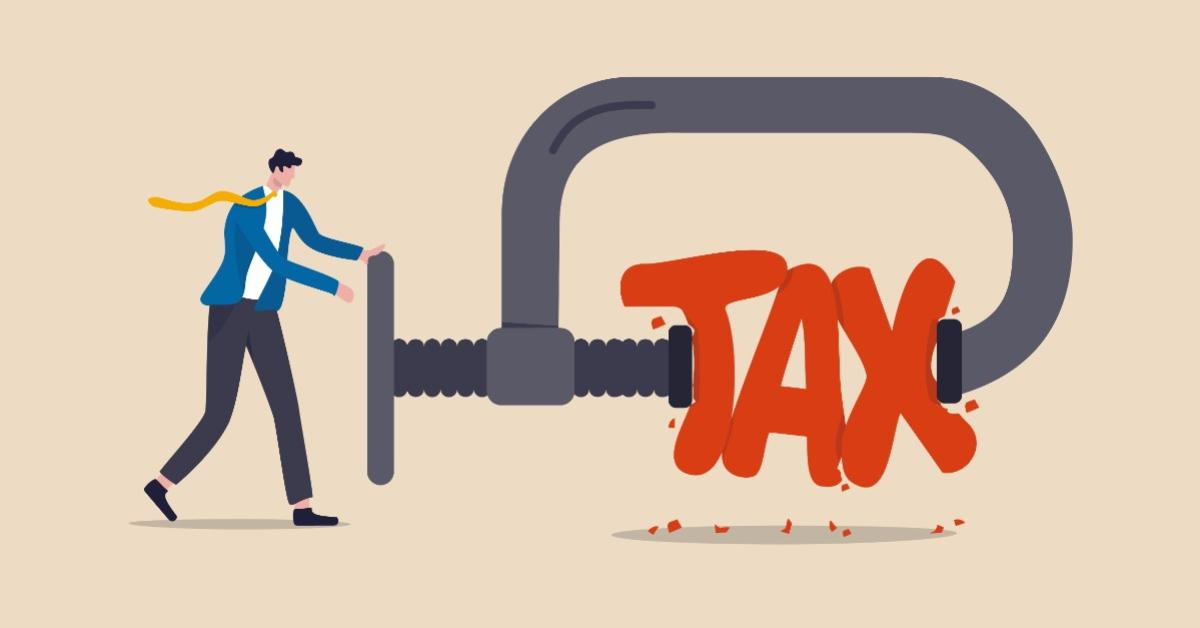
According to many economic commentators, an effective way to generate economic growth is through the lowering of taxes. The lowering of taxes, it is held, will place more money in consumers’ pockets, thereby setting in motion an economic growth. This way of thinking is based on the belief that a given dollar increase in consumer spending will lift the economy’s gross domestic product (GDP) by a multiple of the increase in consumer expenditure.
Assume that out of an additional dollar received individuals spend $0.9 and save $0.1. Also assume that consumers have increased their expenditure by $100 million. Because of this, retailers’ revenue rises by $100 million. Retailers in response to the increase in their income consume 90 percent of the $100 million—i.e., they raise expenditure on goods and services by $90 million. The recipients of these $90 million in turn spend 90 percent of the $90 million—i.e., $81 million. Then the recipients of the $81 million spend 90 percent of this sum, which is $72.9 million and so on. Note that the key in this way of thinking is that expenditure by one person becomes the income of another person. At each stage in the spending chain, people spend 90 percent of the additional income they receive. This process eventually ends, so it is held, with total output higher by $1 billion (10*$100 million) than it was before consumers had increased their initial expenditure by $100 million.
Observe that the more that is being spent from each dollar, the greater the multiplier is and therefore the impact of the initial spending on overall output will be larger. For instance, if people change their habits and spend 95 percent from each dollar the multiplier will become 20. Conversely, if they decide to spend only 80 percent and save 20 percent then the multiplier will be 5. All this means that the less that is being saved the larger is the impact of an increase in overall demand on overall output.
Note that on this way of thinking an increase in savings weakens the pace of economic activity. Thus, it is not surprising that most economists today believe that fiscal and monetary stimulus can prevent the economy falling into a recession. Hence, all that is required is to give every individual more money to spend, and, in turn, should set increases in consumer spending in motion, which in turn will trigger increases in the production of goods and services. Note again that within the framework of “the multiplier” savings are actually bad news—since the less people save, the greater is the multiplier.
Is the Multiplier a Real Thing?
Are increases in savings bad for the economy as the multiplier model indicate? Take Bob the farmer who has produced twenty tomatoes and consumes five tomatoes. What is left at his disposal is fifteen saved tomatoes, which are his savings. With the help of the saved fifteen tomatoes, Bob can now secure various other goods. For instance, he secures one loaf of bread from John the baker by paying for the loaf of bread with five tomatoes. Bob also buys a pair of shoes from Paul the shoemaker by paying for the shoes with ten tomatoes.
Note that savings at his disposal limit the amount of consumer goods that Bob can secure for himself. Bob’s purchasing power is constrained by the amount of savings—i.e., tomatoes at his disposal, all other things being equal. Now, if John the baker produced ten loaves of bread and consumed two loaves his savings are eight loaves of bread. Equally, if out of the production of two pair of shoes Paul uses one pair for himself then his saving is one pair of shoes.
When Bob the farmer exercises his demand for one loaf of bread and one pair of shoes he is transferring five tomatoes to John the baker and ten tomatoes to Paul the shoemaker. Bob’s saved tomatoes maintain and enhance the life and well-being of the baker and the shoemaker. Likewise, the saved loaf of bread and the saved pair of shoes maintain the life and well-being of Bob the farmer. Note that it is saved final consumer goods, which sustain the baker, the farmer, and the shoemaker, that makes it possible to keep the flow of production going.
Now, the owners of final consumer goods, rather than exchanging them for other consumer goods, could decide to use them to secure better tools and machinery. With better tools and machinery, a greater output and a better quality of consumer goods can be produced some time in the future.
Note that by exchanging a portion of their saved consumer goods for tools and machinery the owners of consumer goods are in fact transferring their savings to individuals that specialize in making these tools and machinery. Savings sustain these individuals whilst they are busy making these tools and machinery.
Once these tools and machinery are built, this permits an increase in the production of consumer goods. As the flow of production expands, this allows more savings, all other things being equal, which, in turn, permits a further increase in the production of tools and machinery. This in turn makes it possible to lift further the production of consumer goods. So contrary to popular thinking, more savings expand the production flow of consumer goods.
Can an increase in the demand for consumer goods lead to an increase in the overall output by the multiple of the increase in demand? To be able to accommodate the increase in his demand for goods the baker must have the means of payment—i.e., bread—to pay for goods and services that he desires. Note again that the baker secures five tomatoes by paying for them with a loaf of bread. Likewise, the shoemaker supports his demand for ten tomatoes with a pair of shoes. The tomato farmer supports his demand for bread and shoes with his saved fifteen tomatoes. The baker’s increase in the production of bread permits him to increase demand for other goods. In this sense, the increase in the production of goods gives rise to demand for goods.
People engage in production to be able to exercise demand for goods to maintain their life and well-being. Note that what enables the expansion in the supply of final consumer goods is the increase in capital goods or tools and machinery. Savings in turn enables the increase in tools and machinery.
From this, we can also deduce that consumption does not cause production to increase by the multiple of the increase in consumption. The increase in production is in accordance with what the pool of savings permits and is not constrained by consumers’ demand. Production cannot expand without the support from the pool of savings—i.e., something cannot emerge out of nothing.
Now, what does it mean to lower taxes? It means that individuals should have a greater access to the pool of wealth. The only way this can be made possible is if the government’s access to the pool is lowered. The government’s demand for funding must be reduced. After all, in similarity to all other activities, government activities must also be funded.
When government decides to promote a particular activity, this means that the government will supply various individuals that are engaged in this activity with money. The received money in turn will permit individuals in that activity to access the pool of wealth.
Government is not a wealth generator, as it relies on its sources of funding on the private sector. If government could generate wealth, then obviously it would not need to tax the private sector.
We conclude that it is not possible to have a effective tax cuts without a cut in government outlays. A so-called tax cut while government spending continues to increase is just an illusion.
Summary and Conclusion
John Maynard Keynes’s writings remain as influential today as they were eighty-seven years ago. His ideas remain the driving force of economic policy makers at the Fed and Government institutions. These ideas permeate the thinking and writings of the most influential economists on Wall Street and in academia.
Keynesian philosophy holds that demand for goods drives the economy, and that economic recessions result from insufficient demand. In the Keynesian framework, an increase in demand not only lifts overall output but that output increases by a multiple of the initial increase in demand. Within this framework, something can be created out of nothing.




